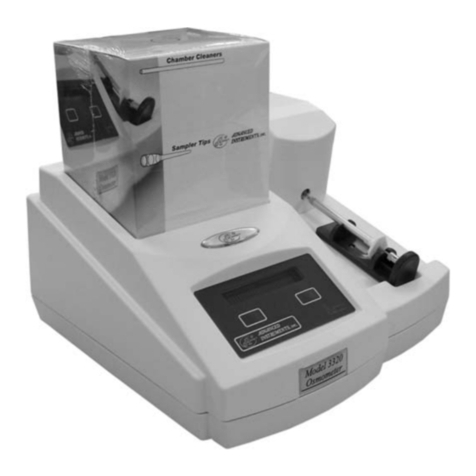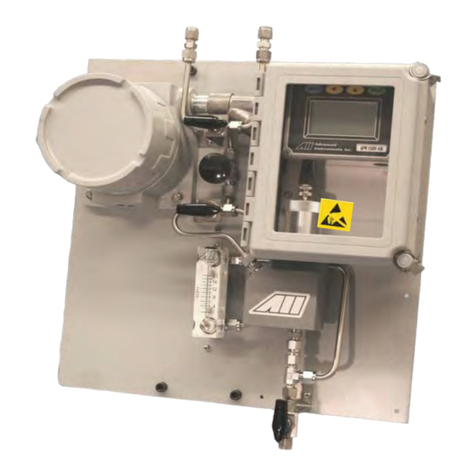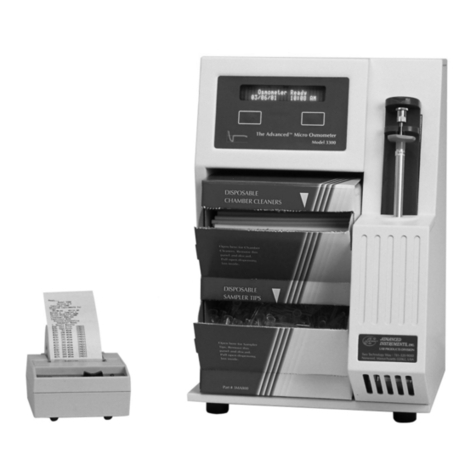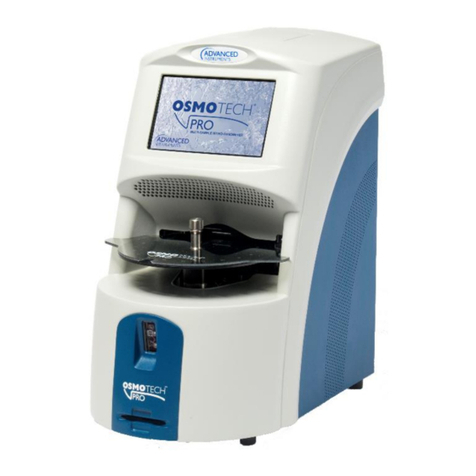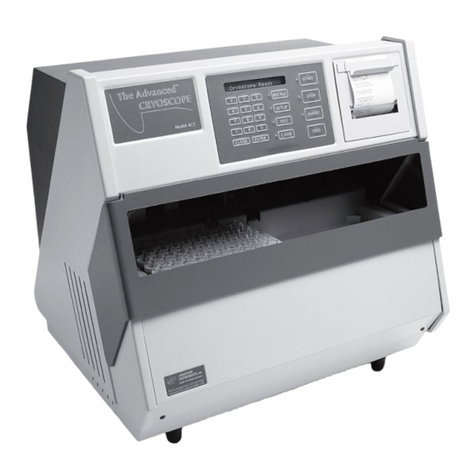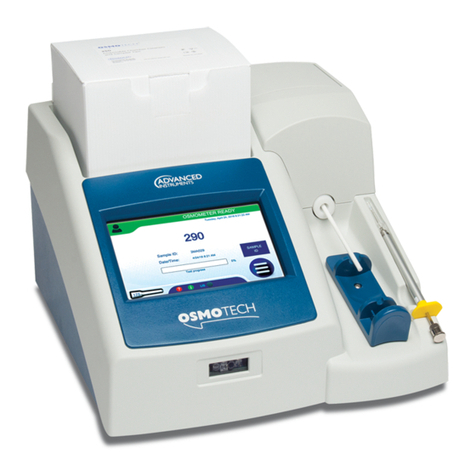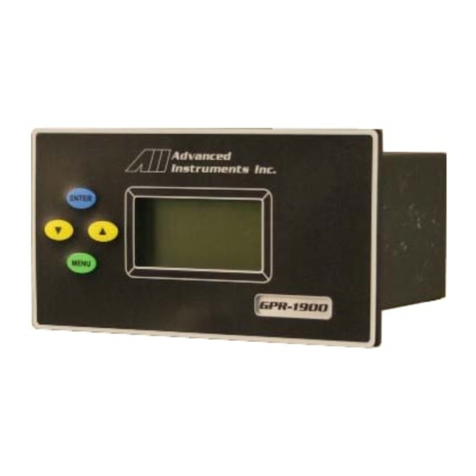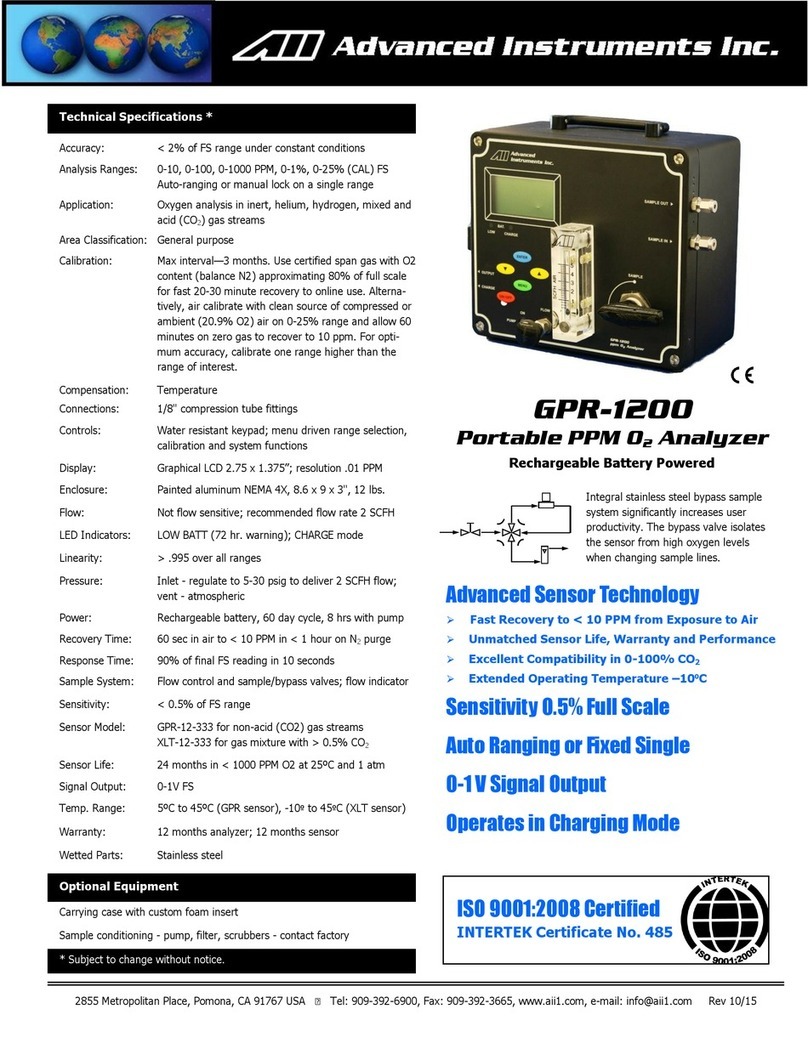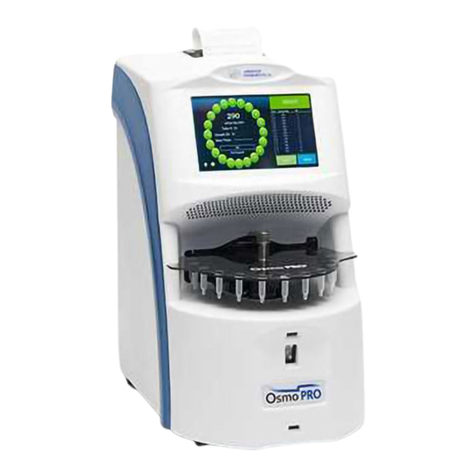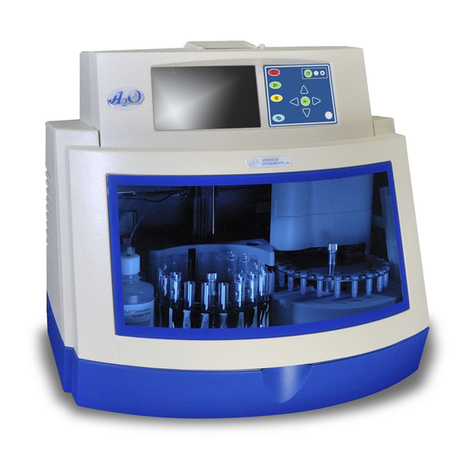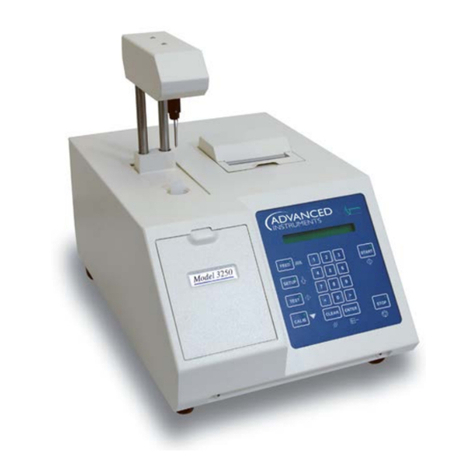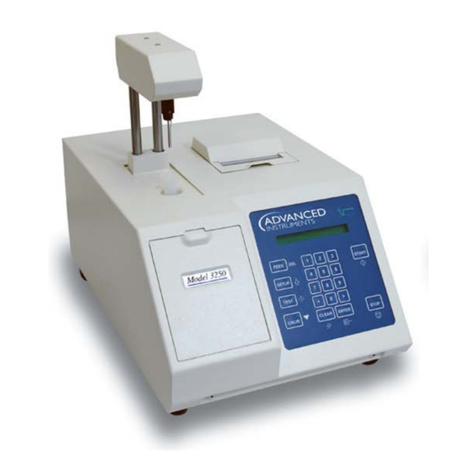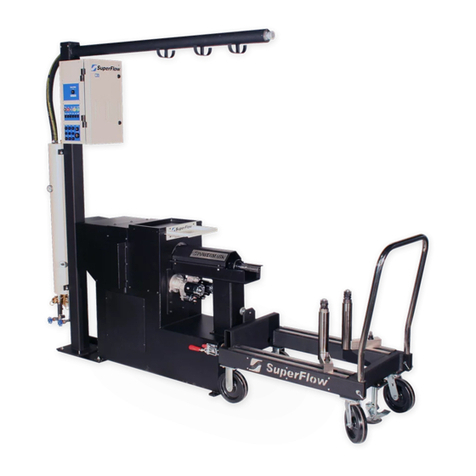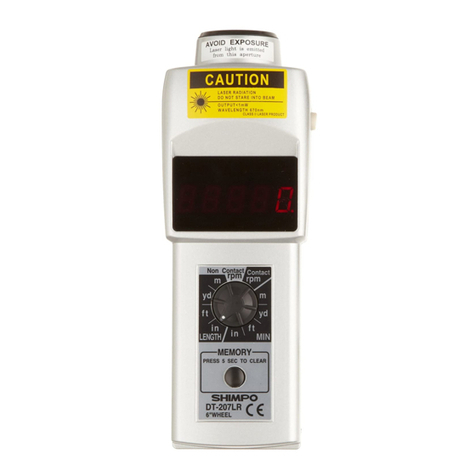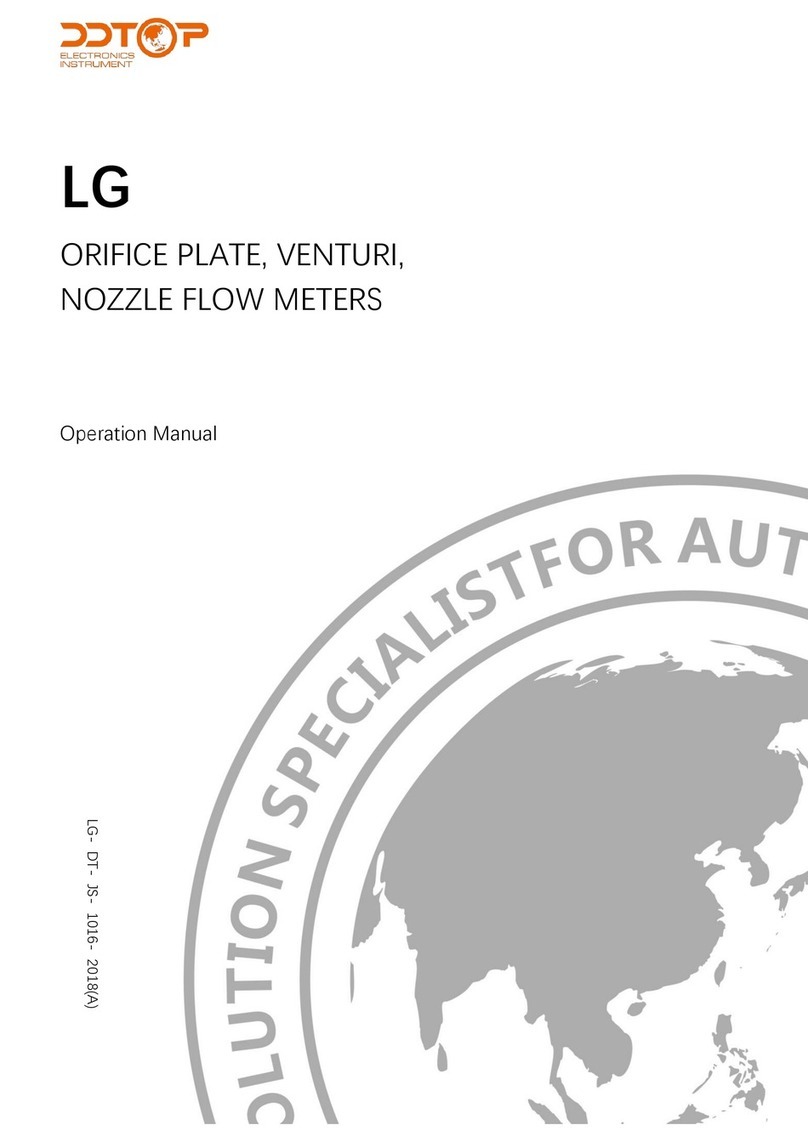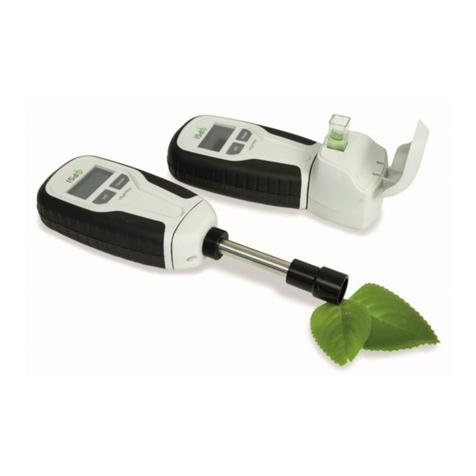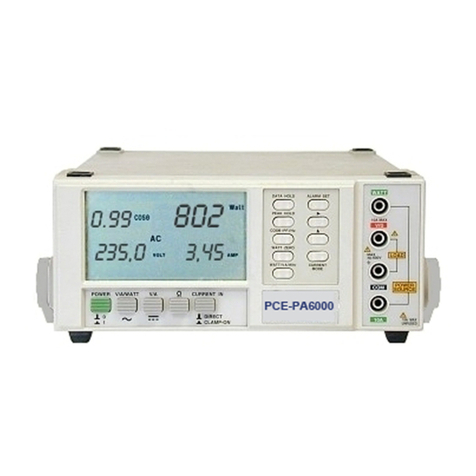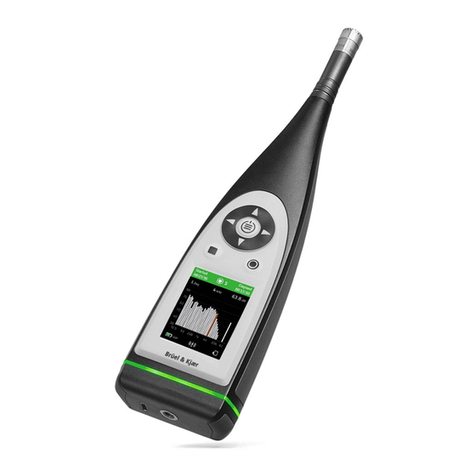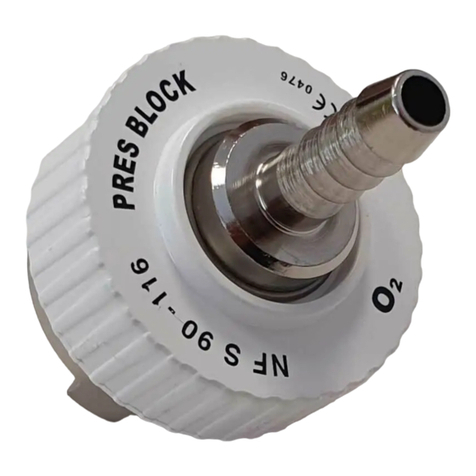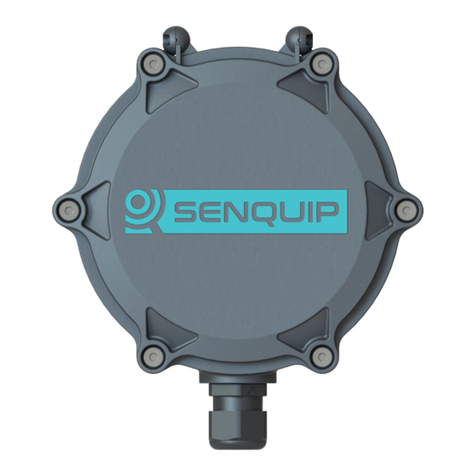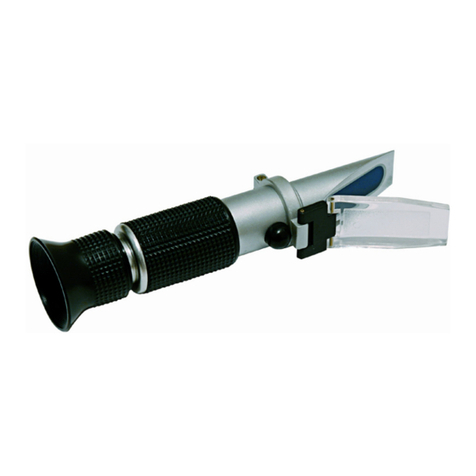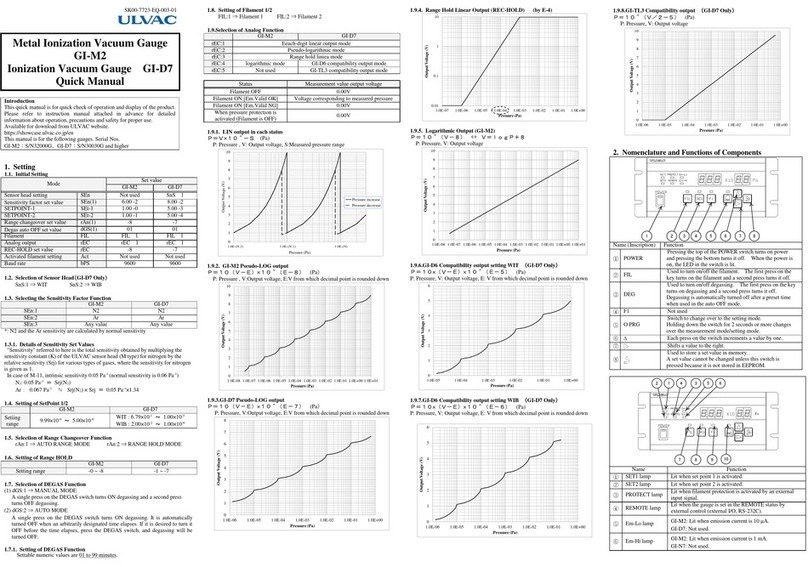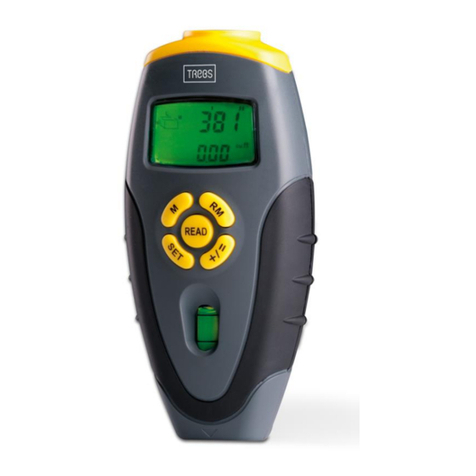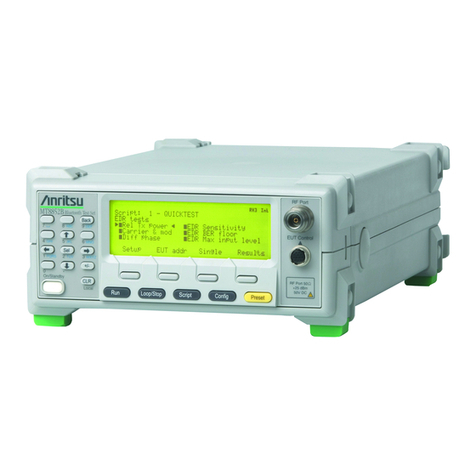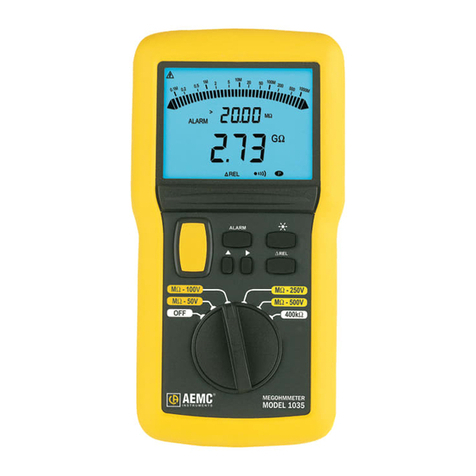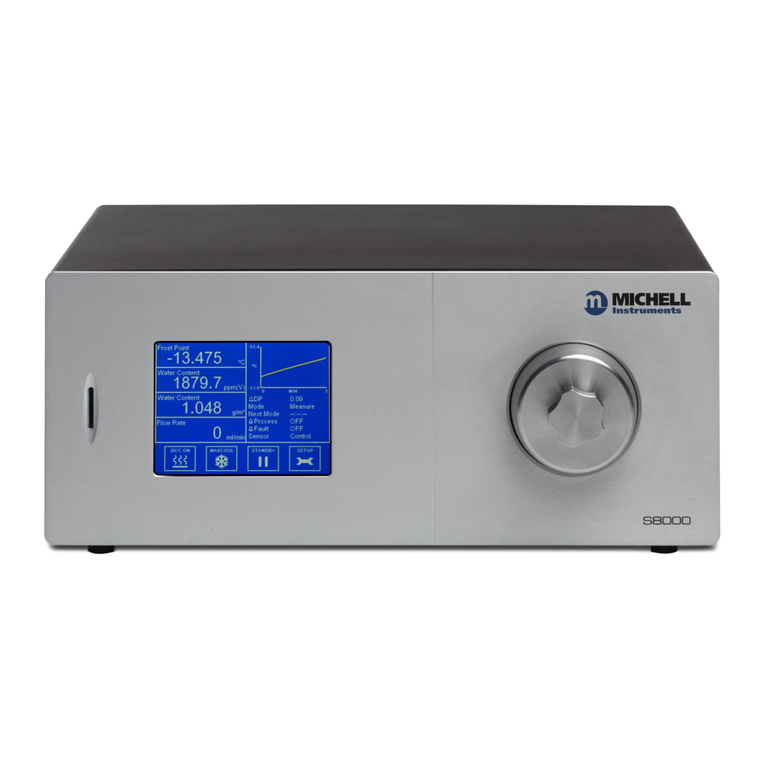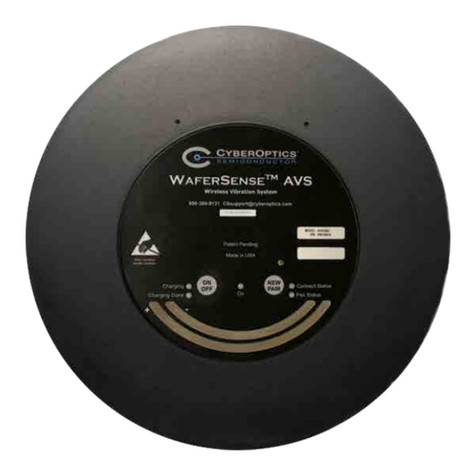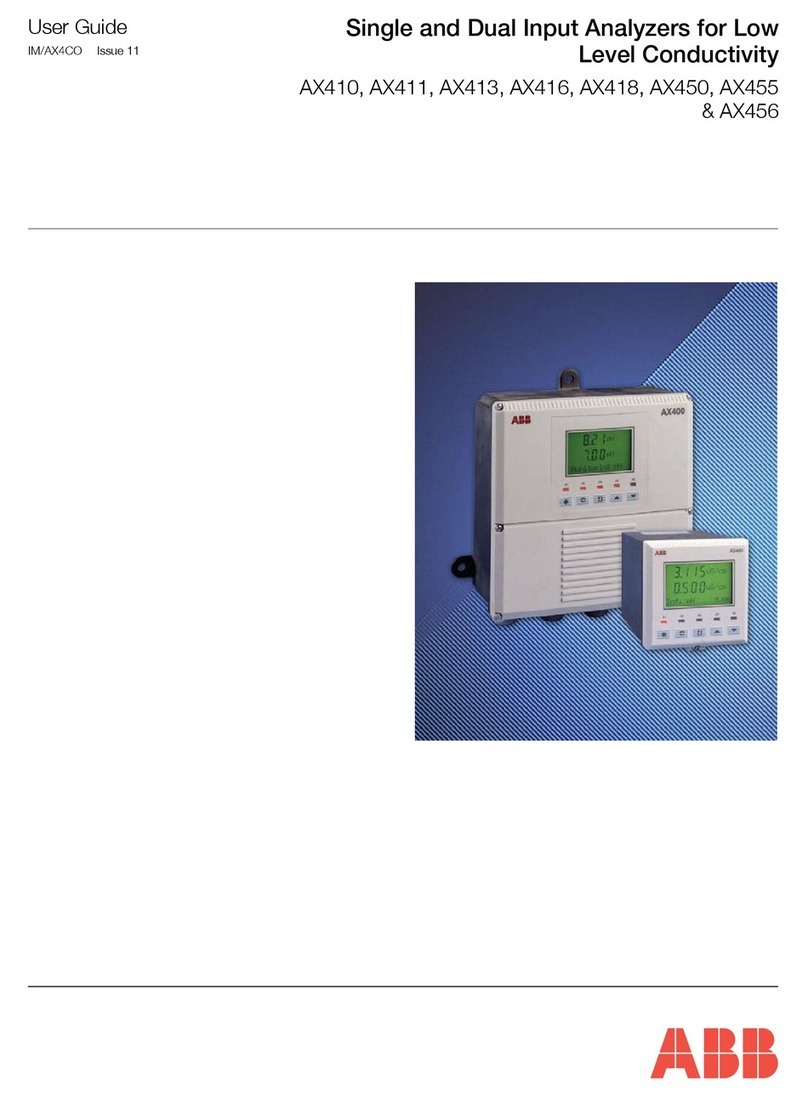
Advanced Instruments Inc.
7
“normal” applications. Deviations from standard conditions will affect the life of the sensor. As a rule of thumb, sensor life
is inversely proportional to changes in the pressure and temperature.
Accuracy & Calibration: Refer to section 5 Operation.
Materials: Assemble the necessary zero, sample and span gases and optional components such as valves, coalescing or
particulate filters, and pumps as dictated by the application. Stainless steel tubing is essential for maintaining the integrity
of the gas stream for low % level analysis.
Operating Temperature: The sample must be sufficiently cooled before it enters the analyzer and any optional
components. A coiled 10 foot length of ¼” stainless steel tubing is sufficient for cooling sample gases as high as 1,800 ºF
to ambient. The recommended operating temperature is below 35 ºC. However, the analyzer may be operated at
temperature up to 45 ºC on an intermittent basis but the user is expected to accept a reduction in expected sensor life –as
a rule of thumb, for every degree ºC increase in temperature (above 25 ºC), the sensor life is reduced by approximately
2.5%.
Warning – Sample Stream entering unit must never exceed 50 0C
Heat: Situate and store the analyzer away from direct sources of heat.
Liquid and Object Entry: The analyzer should not be immersed in any liquid. Care should be taken so that liquids are
not spilled into and objects do not fall into the inside of the analyzer.
Handling: Do not use force when using the switches, knobs or other mechanical components. Before moving your
analyzer be sure to disconnect the wiring/power cord and any cables connected to the output terminals of the analyzer.
Sample Pressure and Flow
All electrochemical oxygen sensors respond to partial pressure changes in oxygen. The sensors are equally capable of
analyzing the oxygen content of a flowing sample gas stream or monitoring the oxygen concentration in ambient air (such
as a confined space in a control room or an open area around a landfill or bio-pond). The following is applicable to
analyzers equipped with fuel cell type oxygen sensors.
Inlet Pressure: For the analyzers designed to measure oxygen in a flowing gas stream, the inlet sample pressure must
be regulated between 5-30 psig. Although the rating of the SS tubing and tube fittings/valves itself is considerably higher
(more than 100 psig), a sample pressure of 5-30 psig is recommended for ease of control of sample flow.
The analyzer equipped with a sample system has designated SAMPLE and VENT ports. Connect SAMPLE gas to SAMPLE
and the vent to the VENT ports only.
Outlet Pressure: In applications where sample pressure is positive, the sample must be vented to an exhaust pipe at a
pressure less than the inlet pressure so that the sample gas can flow through the sensor housing. Ideally, the sample must
be vented to atmospheric pressure.
Note: The sensor may be used at a slight positive pressure (e.g., when sample is vented to a common exhaust where the
pressure might be higher than 1 atmosphere). However, the pressure at the sensor must be maintained at all times
including during the span calibration. This may be accomplished by using a back-pressure regulator at vent line of the
analyzer. The back-pressure regulated must be set less than 2 PSIG. For higher back-pressure requirements, consult
factory.
Caution: A sudden change in pressure at the sensor may result in the sensor electrolyte leakage.
Flow rates of 1-5 SCFH cause no appreciable change in the oxygen reading. However, flow rates above 5 SCFH may
generate a slight backpressure on the sensor resulting in erroneous oxygen readings.
Caution: Do not place your finger over the vent (it pressurizes the sensor) to test the flow indicator when gas is flowing
to the sensor. Removing your finger (the restriction) generates a vacuum on the sensor and may damage the sensor
(voiding the sensor warranty).
Application Pressure - Positive: A flow indicator with integral metering valve positioned upstream of the sensor is
recommended for controlling the sample flow rate between 1-2 SCFH. If necessary, a pressure regulator upstream of the




















